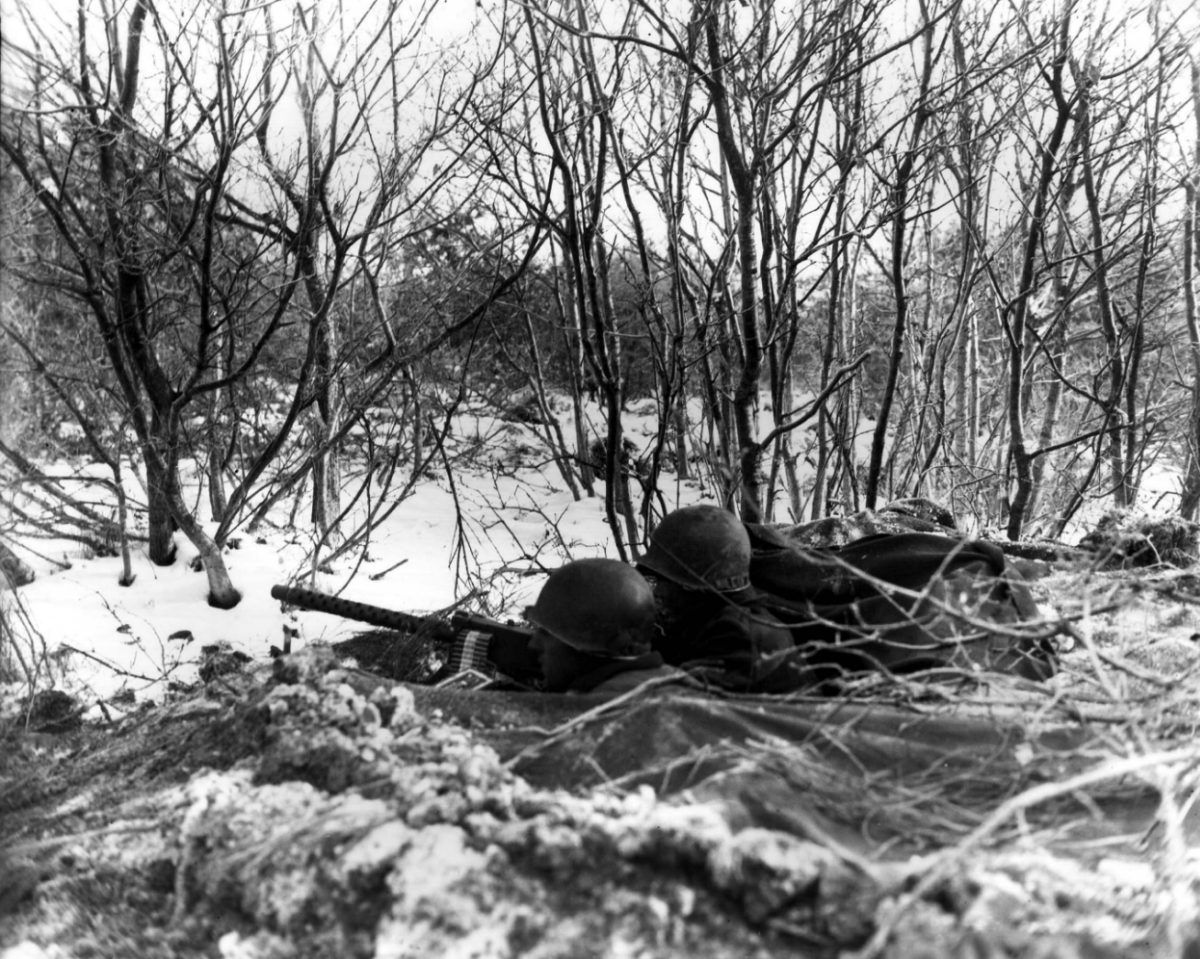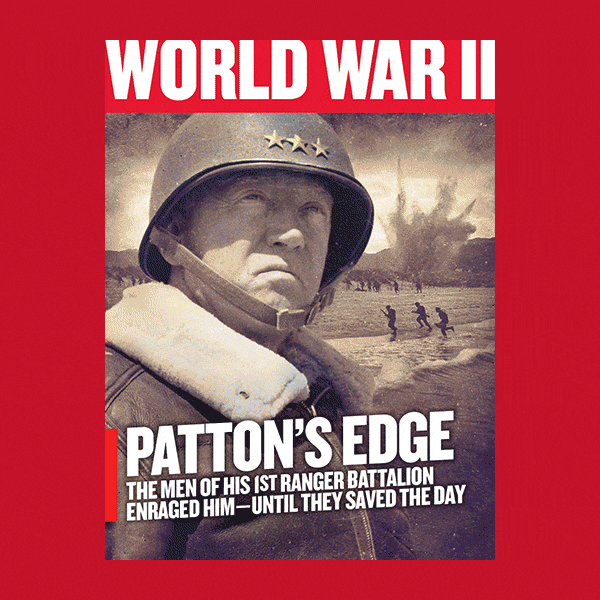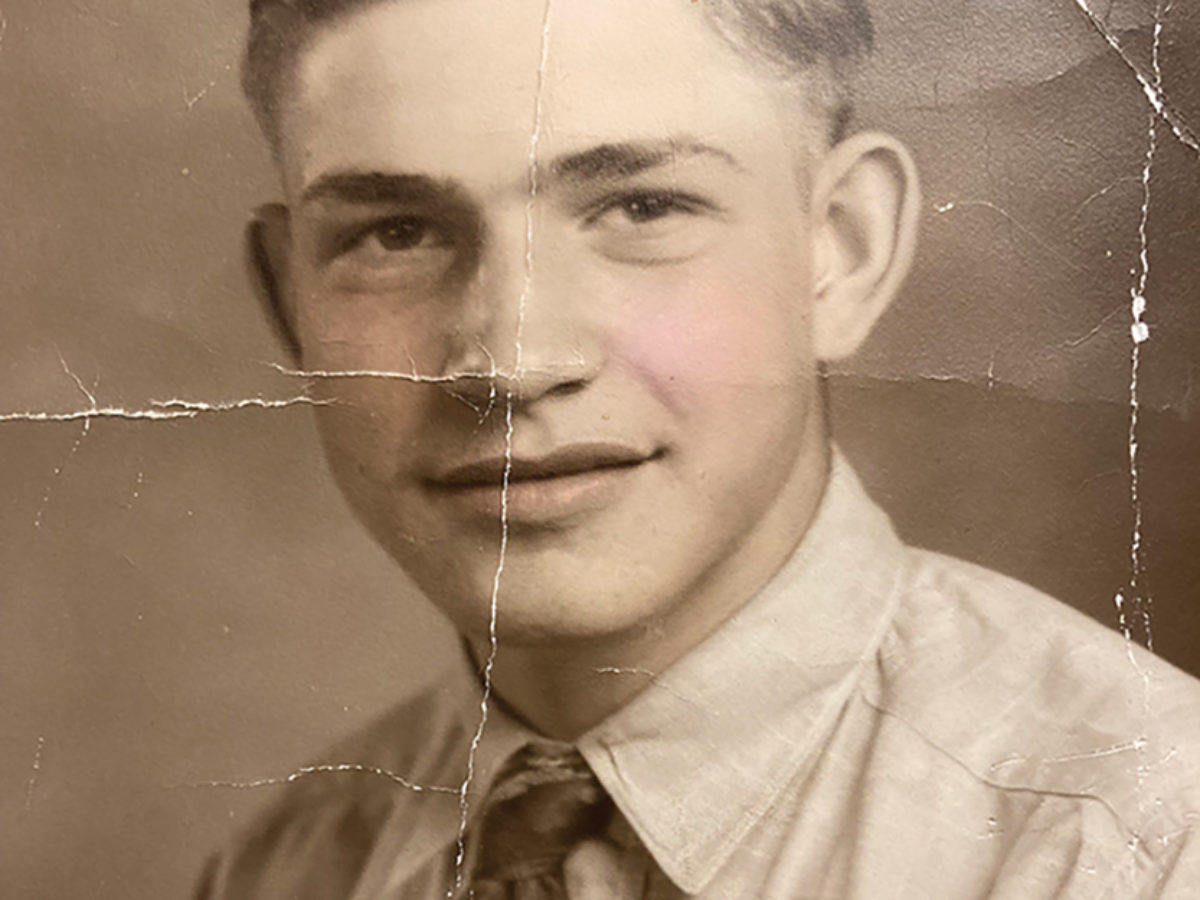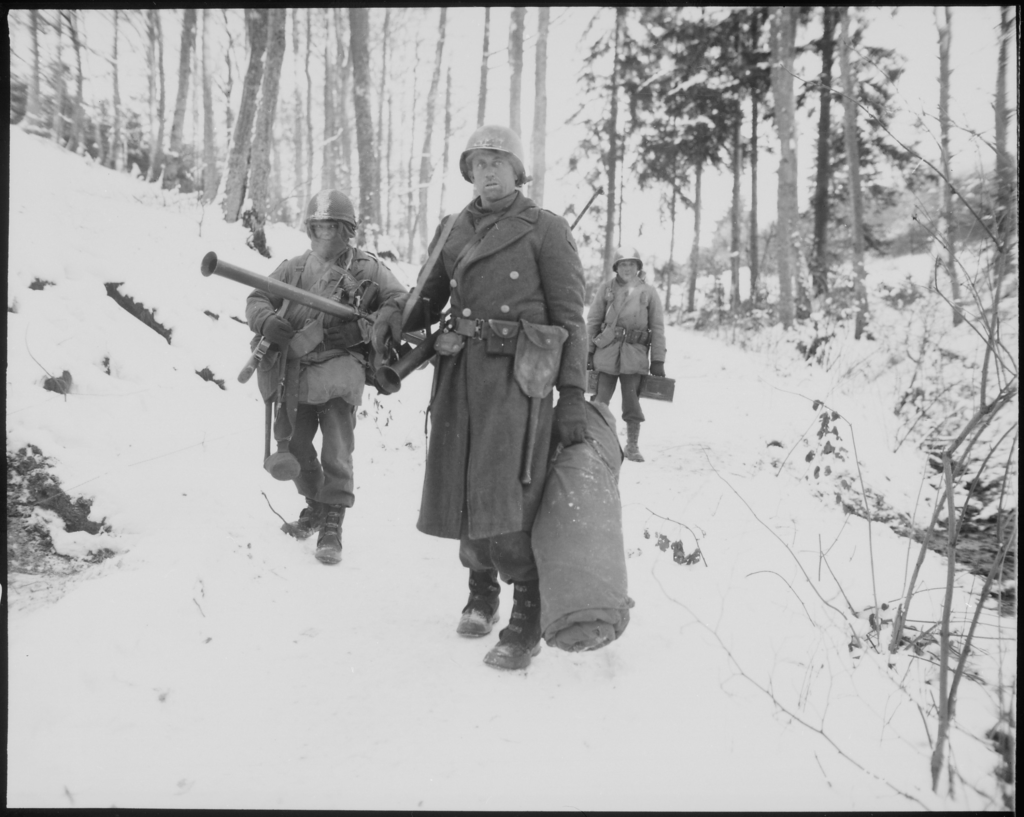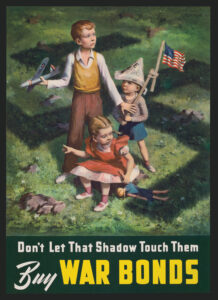The men of the 687th Field Artillery Battalion hadn’t had a warm meal in four days. Ever since the Germans launched an offensive in the Ardennes region of eastern Belgium and northern Luxembourg on December 16, 1944, the artillerymen — and all the makings of their Christmas dinner — had been on the move. The day of the 19th had seen them firing in support of American defenders at various displacements around the Luxembourgian town of Wiltz. Just before sunset, however, they had run dangerously low on ammunition and were forced to retreat.
So when the battalion paused to regroup about six miles southwest of Wiltz at a quiet crossroads containing little more than a two-story café, it seemed a good time to break out the Christmas dinner; they’d likely be at the crossroads, known as Poteau de Harlange, overnight. The battalion’s commander, Lt. Col. Max Billingsley, and his executive officer decided to head into Bastogne, about 10 miles to the west, just over the Belgian border, to learn more about the situation. The battalion’s batteries set up around the crossroads: Headquarters Battery in the café; Battery A in a field to the west; and Batteries B and C lined up bumper-to-bumper in open areas to the north and south, respectively. Meanwhile, the battalion’s cooks prepared the special fare in the café: chicken and all the trimmings. When it was ready, the exhausted men formed a chow line and filed through.
Lieutenant Les Eames, an officer in the survey section, had just finished his meal when a GI burst into the command post in the café and yelled: “Small arms fire! Down the road!” The battalion had been outnumbered and outgunned in Wiltz. Now, with the ammunition nearly depleted, the odds were even worse.
While it wasn’t apparent at the time, the weary men of the 687th Field Artillery Battalion and other desperate groups of GIs played a critical role in the Allied victory during the Battle of the Bulge. By putting up persistent resistance against powerful and numerically superior enemy forces, those ragtag bands of American soldiers gave General Dwight D. Eisenhower enough time to rush reinforcements to the Ardennes and blunt the enemy offensive. Without their efforts to slow the Wehrmacht juggernaut, the battle might have turned out much differently.
On the heels of his comrade’s warning cry, Eames felt his heartbeat quicken and his blood seem to bubble like ginger ale. He and the other soldiers around him grabbed their rifles and helmets and poured outside. They heard the popping and rattling sound of small-arms fire in the distance. Corporal Arch Jack, a survey section clerk, was lying in a ditch, peering up the road, thinking that some GI was probably just trigger-happy. “The next thing, a vehicle turned lights full-on and headed up the road towards us,” he recalled. “There was a lot of hollering and confusion. I crawled in a shallow ditch all the way to the café with tracers zooming over me.”
The intensity of the distant shooting grew, and the vehicle kept coming, right at the 687th. No one could quite tell whether the vehicle was American or German. It looked like an armored car. Could it be an American vehicle but with Germans inside? Why in the world did the driver have his headlights blazing in a war zone?
Just across the road from the café, a halftrack with a 40mm anti-aircraft gun had been set up. The gunner decided to take no chances. He opened fire at the approaching armored car and scored a direct hit. The vehicle turned into a ball of fire. Machine gunners added to the carnage.
The vehicle, it turned out, held Americans. The M8 armored car was the point vehicle of a small retreating column of scout soldiers and 3rd Battalion, 110th Infantry, troops retreating from Wiltz. This group included the commanding officer of L Company, 110th, Lieutenant Bert Saymon, who was hanging onto another M8. Saymon and the others were now under fire from German troops on either side of the road, as well as their own 687th comrades. Another officer from this column managed to run into the café and inform his colleagues that there were two companies of enemy paratroopers from the 5th Fallschirmjäger Division just down the road.
No sooner had the warning come than the German paratroopers attacked the 687th, prompting a wild, chaotic, intimate fight around Poteau de Harlange. The Germans were everywhere. Tracers were flying all over the place in the dark night. Corporal Jack was under a truck next to the café, wondering what to do next. “All kinds of fire were going now — mortars, burp guns and rifle grenades,” he said. “A flare shell lit up the area. I saw a figure crawling toward [the] building and came close to shooting. I then hollered at him — it was a B battery GI.” Jack got up and ran inside the building.
Upstairs, on the second floor, Pfc Dick Atkins and Tech. Sgt. Gene Fleury were scrambling out of their sleeping bags, grabbing for their weapons and pulling on their boots. Atkins figured the building would be a magnet for enemy fire and he wanted to get out of there: “The Krauts used flares to light up the area and with each flare there was much more fire in our direction.” All over the house, Atkins remembered, men were yelling in confusion. Outside the enemy was hollering too, “calling each other by name but also yelling orders in German that could not be understood by us. By the sound of their voices, they had to be under the influence of something alcoholic.”
Like Atkins, Sergeant Fleury noticed the slurry, boisterous timbre of alcohol in the Teutonic voices: “They were drunk. They were cussing in German and calling us a bunch of names. They were saying: ‘No more zig zig [sex] in Paris!’”
The enemy paratroopers were very young, very frightened — but very excited. Many of them believed that they would make it to Paris for their own zig zig. Atkins and Fleury piled down the stairs and through the doorway.
Recommended for you
At the same time, Captain William Roadstrum, the Headquarters Battery commander, was just outside the building. “What a psychology lesson that area was,” he said. “Guys just wanted to stand around by the building in the dark talking with each other. In spite of the bullets whizzing around and the grenades and mortar shells. They were…almost hypnotized by the situation.” Roadstrum tried to get them to lay down some fire at the enemy. He even slapped a couple of soldiers in the face, “all with little or no effect.”
Then he saw Atkins and Fleury. He looked at Fleury and ordered, “Sergeant, get two or three men and follow me.”
Fleury was a smart aleck in the best of times. He liked Roadstrum as a person but thought he was overmatched as a combat leader. He glanced at the captain: “Follow you?! Where are we going, Captain?”
“We’re gonna outflank ’em,” Roadstrum replied.
“Outflank ’em?” Fleury shot back. “We don’t even know where they’re at!”
In spite of his reservations, he went with the captain. Roadstrum, Fleury and Atkins exited the house out the back door, to the south, and worked their way along the road, at a crouch.
A few feet away, a good friend of Fleury’s from the wire section, Pfc Norman Morgenstern, was huddled in a ditch, pointing his rifle right at the three men, wondering whether or not to pull the trigger. “I can almost touch them,” he wrote in a present-tense account, “They don’t see me. Who are they? I strain my eyes. Friend or foe? I have the drop on them.”
The shapes moved silently past Morgenstern. He was very close to pulling the trigger but, for some reason, he just could not do it: “I let them go.” At that moment, he had no idea how close he had come to killing his friends. Morgenstern was Jewish, so he had no wish to become a prisoner of the Nazis. He was debating whether or not to discard his dog tags when more Americans plopped next to him in the ditch. Collectively, they retreated from the area. Morgenstern kept his tags.
Meanwhile, Roadstrum, Fleury and Atkins had worked their way to an embankment. “We lay flat and observed the Germans,” Fleury recalled. “Our trucks at that time had Christmas packages in ’em. They were going through ’em and throwing ’em all over. They were firing machine guns and mortar fire at us. They were honking horns and they were hollering at us.”
A mortar shell exploded mere yards away. Fragments tore into Fleury’s chest, knocking him to the ground. Roadstrum was not hit, nor was Atkins. Unaware that Fleury had been hit, they got up and moved west along the road, toward Bastogne. Fleury lay there in shock for a few minutes, his chest bleeding and one of his ribs probably cracked. About 50 yards away, he heard someone shouting to surrender and he wanted no part of that. “Bullshit!” he exclaimed, and he got up to run away. He later met up again with Atkins on the way to Bastogne.
In Battery B’s area, just north of the road, German fire was sweeping up and down the line of vehicles. Private First Class Lou Dersch, a 20-year-old kid from Baltimore, did not know what was going on. Soldiers from his battery were scattering in every direction. “I mean, we were facing German paratroopers and we hardly had anything to fight them with,” he said. The private had fired his howitzer’s last shell in Wiltz, shortly before Billingsley ordered the unit to retreat. It turned out to have been full of propaganda leaflets, which Dersch had watched scatter over the target area. They were now facing an enemy while terribly under-armed. “They were heavily armed,” Dersch recalled. “We basically had carbines. There were flashes and tracers everywhere. It was pretty bad.”
Dersch and two of his buddies made a run for their truck, but one of Dersch’s comrades was hit by small-arms fire. “He was badly injured, bleeding,” he said. Machine gun bullets were bouncing off the pavement, clanking against vehicles. Mortar rounds were exploding uncomfortably close. Dersch said he and the other man picked up the wounded soldier “and carried him all the way to the trucks, probably a few hundred yards.” They got him into a truck and took off. As they drove west to Bastogne, Dersch could not help but wonder what had happened to the buddies he was leaving behind. He felt guilty but was happy to have escaped the slaughter.
In the meantime, Lieutenant Eames was lying behind a hedge, just outside the café. Four feet away, a German soldier stood up and unleashed a burst from his burp gun. “I reckon I never will get flatter in my life than I got right then,” Eames recalled. “I felt bullets around my heels but none hit…a grenade went off close by too but still no holes in me.” He crawled through the doorway, into the café. The place was crammed with soldiers, including several wounded men who were howling and moaning.
On both floors, several men were standing at the windows, firing their carbines at unseen targets. The Germans were obviously closing in on the building, but in the darkness and the confusion it was hard to tell friend from foe. Staff Sergeant Walter Austin, a former steelworker from Pittsburgh, was in the attic, pointing his carbine out of a window, looking for a target. Bullets were smashing into the walls and floors of the building. “[They] were coming through windows and through the roof and through the floor,” he recalled. He fired one clip into the night, took out his pistol and fired it until the ammo was exhausted. Then he went downstairs to see what was going on there.
On the first floor, Major Ed German, the battalion operations officer, was contemplating what to do. With Lt. Col. Billingsley and his executive officer elsewhere, he had a growing number of wounded men stacking up in the hallways. It was only a matter of time before the enemy overran the café. German gathered together a group that included Lieutenant Eames and discussed their predicament. “Major German suggests we surrender,” Eames wrote in his diary, “to save piles of wounded & yet let the [batteries] make out as best they can.” Eames and the others agreed it was the right thing to do.
German passed the word around the house. He shined a flashlight outside and, able to speak German, asked to see the enemy commander: “Wo ist der chef?”
A few minutes later, enemy troops stormed into the café. Eames recalled hearing “heavy boots in the hall….[A] burp gun let [a] few rounds out against [the] ceiling to quell any overambitious soul.” The troops yelled at them to get out, bellowing: “Raus! Raus!”
Outside of the café, the Germans lined up the Americans and began to work them over. “These guys were wild and they were very young, no doubt teenagers,” Pfc Ervin McFarland wrote. “They were handy with their gun butts as they used them on many of us.” Anyone who did not keep his hands firmly on or above his head risked getting pummeled. Major German overheard one sergeant urging his men to shoot the prisoners, but a nearby captain squelched any thought of that.
Farther down the line of prisoners, Sergeant Austin kept his hands high and tried to remain calm. “They slapped and banged you around,” he said, “stripped you down, took…your watch, took your wallet, pen knives, and even made me take off my shoes.” As the German soldiers lined them up, Corporal Jack found himself shivering uncontrollably. “It was bitter cold standing in the open,” he said. “My hands were numb from standing…with hands over head. We were placed in columns and started marching east.”
Thus ended the debacle at Poteau de Harlange. An exhausted, under-supplied artillery unit was no match for an aggressive force of enemy airborne troops in this kind of close-proximity fight. The Germans captured between 110 and 125 men, many of whom were wounded.
Not surprisingly, Headquarters Battery was decimated. Battery A got away to Bastogne. Battery B lost 21 men, but escaped with most of its vehicles and guns. Both batteries later fought alongside the 101st Airborne Division during the battle for Bastogne. Battery C lost all of its equipment, including its howitzers, but many of the soldiers got away to Bastogne, or to Sibret, to the southwest of Bastogne. The 687th still existed as a unit, but it was badly mauled. Several more weeks would pass before an influx of replacements and new equipment brought the battalion back to strength. They fought well and served until the end of the war in Europe.
Even many decades later, the American survivors had little idea that their sacrifice had done some good for the Allied cause. Without question, the battle at Poteau de Harlange was one-sided, but it cost the Germans valuable time and organization. The Fallschirmjäger unit that overran the 687th was preoccupied with its new prisoners and loot, rather than a forward advance. The Germans’ timetable was upset, and they played no part in the looming battle for Bastogne.
Whether or not they understood their contribution to American victory in the Bulge, those who experienced the horror at Poteau de Harlange could never forget that night. Their nightmarish experiences, in combination with those of untold numbers of other Americans throughout the Ardennes, bought Eisenhower the time he so badly needed to strike back and win.
This article was written by John C. McManus and originally appeared in the March 2007 issue of World War II magazine. John C. McManus is a member of World War II’s editorial advisory board and a professor of U.S. military history at the University of Missouri-Rolla. His new book, Alamo in the Ardennes: The Untold Story of the American Soldiers Who Made the Defense of Bastogne Possible, will be published in March 2007 by John Wiley and Sons. For more great articles subscribe to World War II magazine today!

